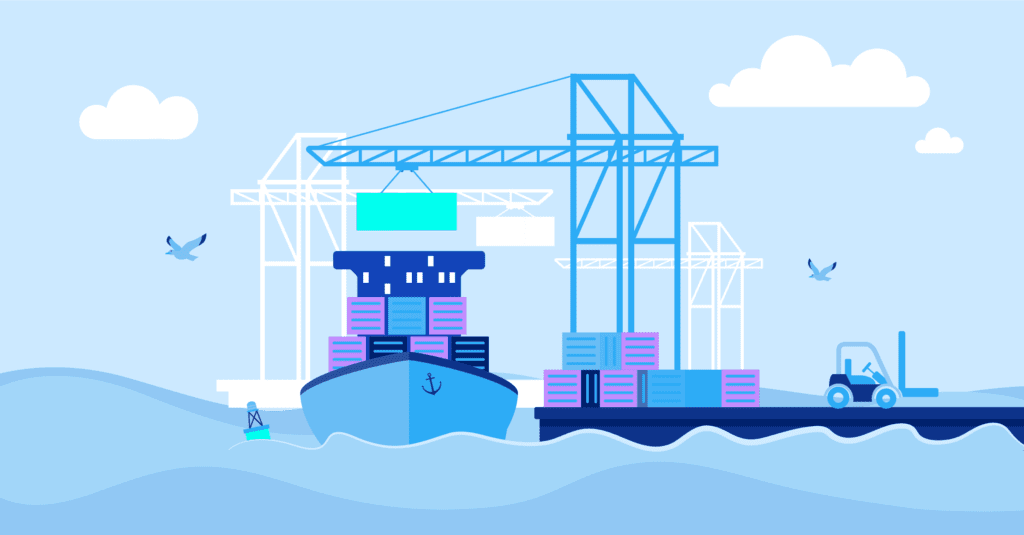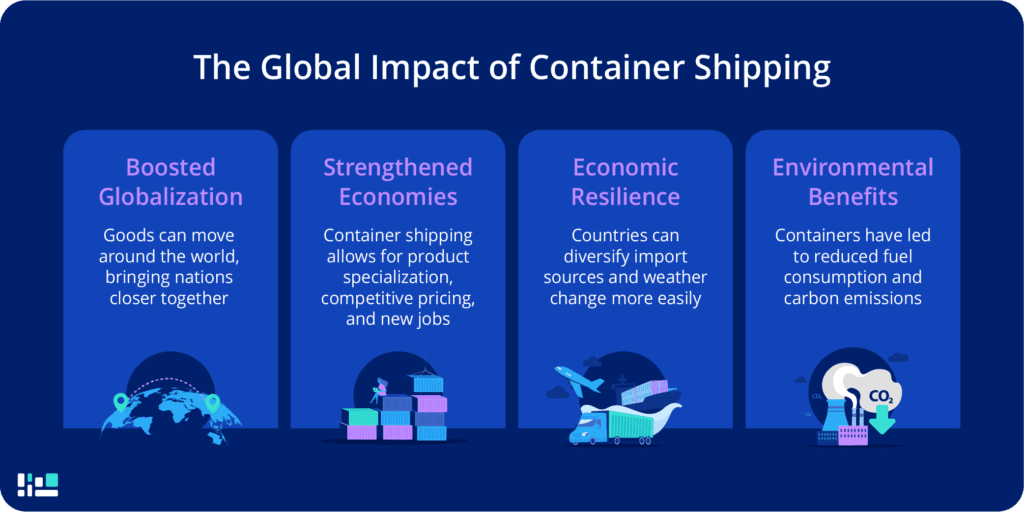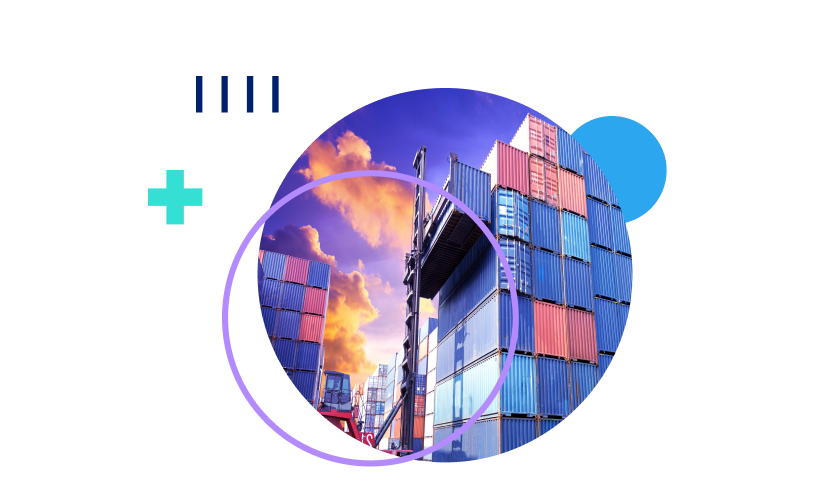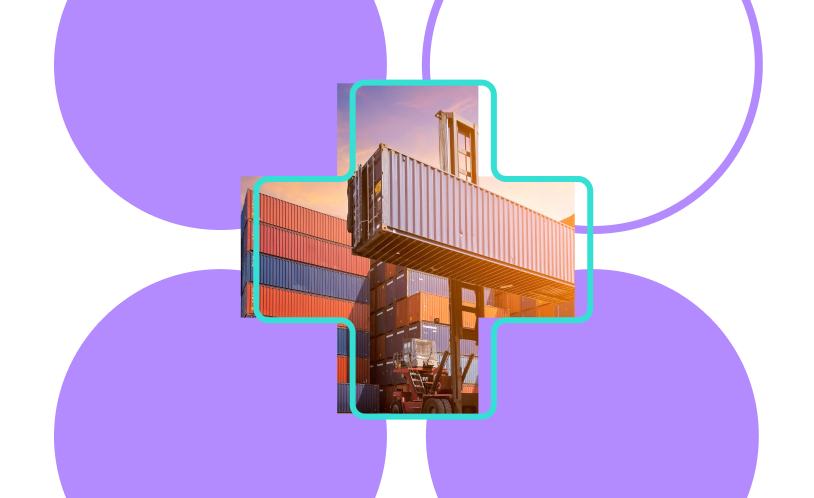Container shipping plays a huge role in global trade. In fact, it’s one of the pillars of the international economy. From electronics to clothing to perishable goods, containerized freight allows businesses to move goods across the world efficiently. And as businesses become more global, container shipping becomes ever more important.
What is container shipping, why is it so crucial, and how does it benefit businesses and global economies? Read on to find out.
What is Container Shipping?
Container shipping, also known as container transportation, means using standardized cargo containers to transport goods by sea, rail, or road. These containers, usually made of steel or aluminum, serve as a protective shell for the commodities inside, shielding them from external elements and damage.
Looking for container shipping price quotes?
Key Benefits of Container Shipping
Container shipping offers a number of advantages:
- Efficiency: Containers are easy to load and unload, which reduces turnaround times at ports.
- Security: Containers protect goods from damage and theft during transit.
- Intermodal transportation: Containers can be transferred easily between ships, trucks, and trains.
- Cost-effective: Standardization lowers handling costs and enhances supply chain predictability.
- Environmental benefits: Container shipping is often more fuel-efficient and environmentally friendly compared to other transport methods.
History and Evolution of the Shipping Container
The concept of using a container for shipping is not new. But the invention of the modern shipping container in the mid-20th century completely revolutionized global trade.
Here’s how:
Before the standard shipping container, goods came in containers of all shapes and sizes, which made handling complicated – and very costly. For example, when goods were transferred from ship to rail, they often needed to be unloaded and repacked to fit the train car.
The new standard shipping containers made things, well, standard. Goods could be loaded onto ships, trains, and trucks without having to be unpacked. This dramatically reduced costs and delays. Standardized containers were also much more effective at protecting goods from damage and theft.
A new world of global trade was born.

How Container Shipping Works
Here’s what the process of global shipping looks like:
- Booking: A shipper books a container with a shipping carrier.
- Packing: Goods are loaded into the container.
- Transport: The filled container is transported to the port, often via truck or train.
- Loading: The container is loaded onto the shipping vessel using cranes.
- Transit: The ship travels to the destination port.
- Unloading and Delivery: Upon arrival, full containers from FCL shipments can be transported by truck or rail to the importer or exporter’s warehouse, or, for LCL shipments, the container is unloaded and its contents are delivered to each importer or exporter’s final destination.
Types of Containers
Standard Containers:
- 20-foot (20ft) Container: This is the industry standard for general cargo. It has a capacity of about 33 cubic meters.
- 40-foot (40ft) Container: At twice the length of the 20ft container, the 40ft is suitable for shipping large quantities of goods, offering almost 67 cubic meters of space.
High Cube Containers:
- 40-foot High Cube: This container offers an extra foot in height compared to the standard 40ft container, making it suitable for slightly taller items.
- 45-foot High Cube: Provides even more space than the 40-foot variant, accommodating bulkier items.
Refrigerated Containers:
- Used for perishables, refrigerated containers come in both 20ft and 40ft sizes and maintain controlled temperatures to keep products fresh.
Open-Top and Flat Rack Containers:
- These are used for cargo that is nonstandard size or shape, or extremely heavy. Open-top containers allow goods that are too heavy to be loaded through the container door with a forklift to instead be loaded instead into the container using a crane. Then, the top is covered with steel bows and tarpaulin. Flat rack containers are typically used for large machinery or vehicles that don’t fit inside a standard container. They do not have walls, but instead are secured with lashing rings and tarps from the sides.
Tank Containers:
- Typically around 20ft, these are used for liquids like chemicals, oils, and food-grade products.
Ready to ship?
The Global Impact of Container Shipping
Before container shipping, global shipping was simply too complex and expensive for many businesses. Its advent has not only transformed the logistics industry – it has also fundamentally reshaped the global economy in a number of ways:
Boosted Globalization:
- Container shipping has made products from one corner of the world accessible to consumers thousands of miles away. This has led to an interconnectedness that has brought nations closer both economically and culturally.
Strengthened Economies:
- Thanks to container shipping, countries have been able to specialize in producing specific goods at competitive prices, which boosts exports and strengthens economies. Additionally, the availability of diverse products has also led to enhanced consumer choice and more competitive pricing.
- Job Creation: The container shipping industry has created millions of jobs worldwide, from shipbuilding and port operations to the logistics and transportation sectors.
Economic Resilience:
- The ability to diversify import sources means that countries can adapt better to any local disruptions, including natural disasters, political issues, or trade disputes.
Environmental Benefits:
- While there are environmental challenges associated with shipping, the containerization of cargo has led to fewer trips, translating to reduced fuel consumption and carbon emissions.

Container Freight Services
Freightos.com takes pride in making booking a container shipment easy. Our global freight marketplace allows importers and exporters to book full container shipments (and less-than-full container shipments!) easily by offering access to dozens of logistics providers for price and service comparison and instant booking. Importers and exporters can also manage shipments, make all payments, and book additional services like insurance and customs clearance brokerage right on the platform. You don’t have to be an expert in container freight to book a shipment on Freightos.com in minutes.
Global Network
Freightos.com boasts an expansive global network, with service at major ports and cities around the world. Our marketplace connects shippers with container shipping service providers, offering competitive rates and streamlined services.
Why Choose Freightos.com for Container Shipping?
Freightos.com believes in making container shipping seamless and transparent. We do this by offering real-time price comparisons, round-the-clock customer service, tracking, and easy in-platform communication with providers. You’ll be able to choose the best service for your business without having to call or email each provider for price quotes or wait days for responses. You’ll also get visibility into market rates so you can book with the confidence that you’re getting a fair price.
Get container shipping quotes now
Container Shipping Resources
Looking for more in-depth Container Shipping Content? Check out the following resources:
Container Shipping Cost Calculator and Rates
- Navigate through the complexities of container shipping costs with our Container Shipping Calculator. This tool is designed to provide you with accurate, real-time rates.
Container Shipping News
- Keep your shipping knowledge current and your strategy informed with our Weekly Freight Updates. Dive into the latest news, trends, and insights in the dynamic world of container shipping, so your operations stay in tune with the global pulse.
Global Container Freight Index
- Gain a strategic edge by exploring the Freightos Terminal. Freightos Terminal offers insight into global container pricing trends, enabling you to make data-driven decisions and optimize your shipping investments.
Guide to Container Dimensions and Utilization
- Make sure you’re making the best use of container space with our detailed guide to Container Dimensions. Here you’ll find everything you ever wanted to know about container sizes and how they’re used for global trade.
LCL vs. FCL Shipping Strategies
- Learn more about the difference between less than a container load and full container load shipping. Whether you’re shipping smaller loads or utilizing full container loads, our guides will help you figure out when it’s better to fill that full container or stick with smaller shipments.



